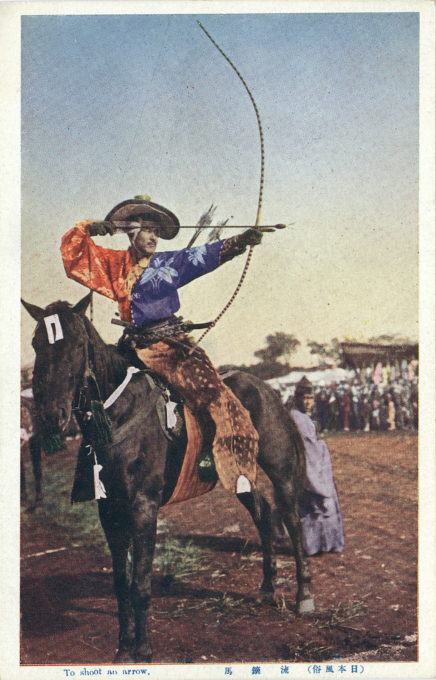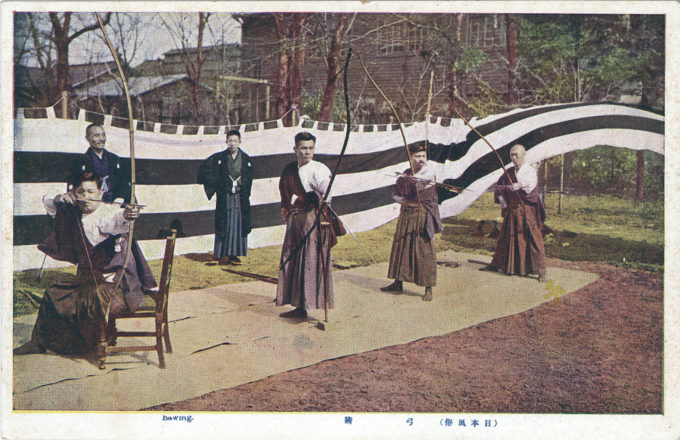“When the fourteenth Emperor, Chuai [who reigned from 192-200 AD], died in battle in Kyushu, his energetic and ambitious wife, the great Empress Jingo, carried on the battle and won it. She subsequently undertook the conquest of Korea and came home victorious. Archery received a great impetus under her royal favor. It is said that, before the birth of her son Ojin, she bound the strings of her war bows around her body to insure his being an ambitious, sturdy and warlike man. Her hopes were gratified and he became deified as the personification of all manly and warlike qualities under the name of Hachiman, popularly known as the ‘God of War’.
“Following the example set by the Empress, it became the custom among prospective Japanese mothers to bind themselves with strings from their husband’s war bows for a period before childbirth.
“… The annals of Japan abound with references to feats of skill with the bow and arrow. Up to the time of introduction of firearms – the first rifle was brought into the country by the Portuguese in 1543 – it was the chief weapon for all soldiers, the sword and the spear being used only for close fighting.
“It was one of the accomplishments that was required of every young man, the sons of the samurai and daimyo as well as those of the common people being equally enthusiastic in its use. There are tales of the wonderful feats of these archers of olden days – of men who could strike down an eagle in its flight, of others who could send their arrows for incredible distances and with unbelievable accuracy.
“Not only was it a matter of pride to be able to shoot far and straight but to be able to shoot rapidly and for long periods of time became a subject of keen competition.”
– “Flying Arrows: Archery in Japan”, by Jabez K. Stone, Japan Magazine of Overseas Travel, October 1926
“The Japanese bow differs from the English weapon in that it is made of a number of thin plys of wood cunningly joined together to give greatest strength, lightness and resilience.
“The core is of hard tough wood and the outside layers are of bamboo, the whole being bound together with glue and strips of the wisteria vine, specially prepared.
“The cases for these bows were also very beautiful … The quivers [were] very elaborate, being made of skin and rich furs, including boar’s hide and hair.”
– “Flying Arrows: Archery in Japan”, by Jabez K. Stone, Japan Magazine of Overseas Travel, October 1926



